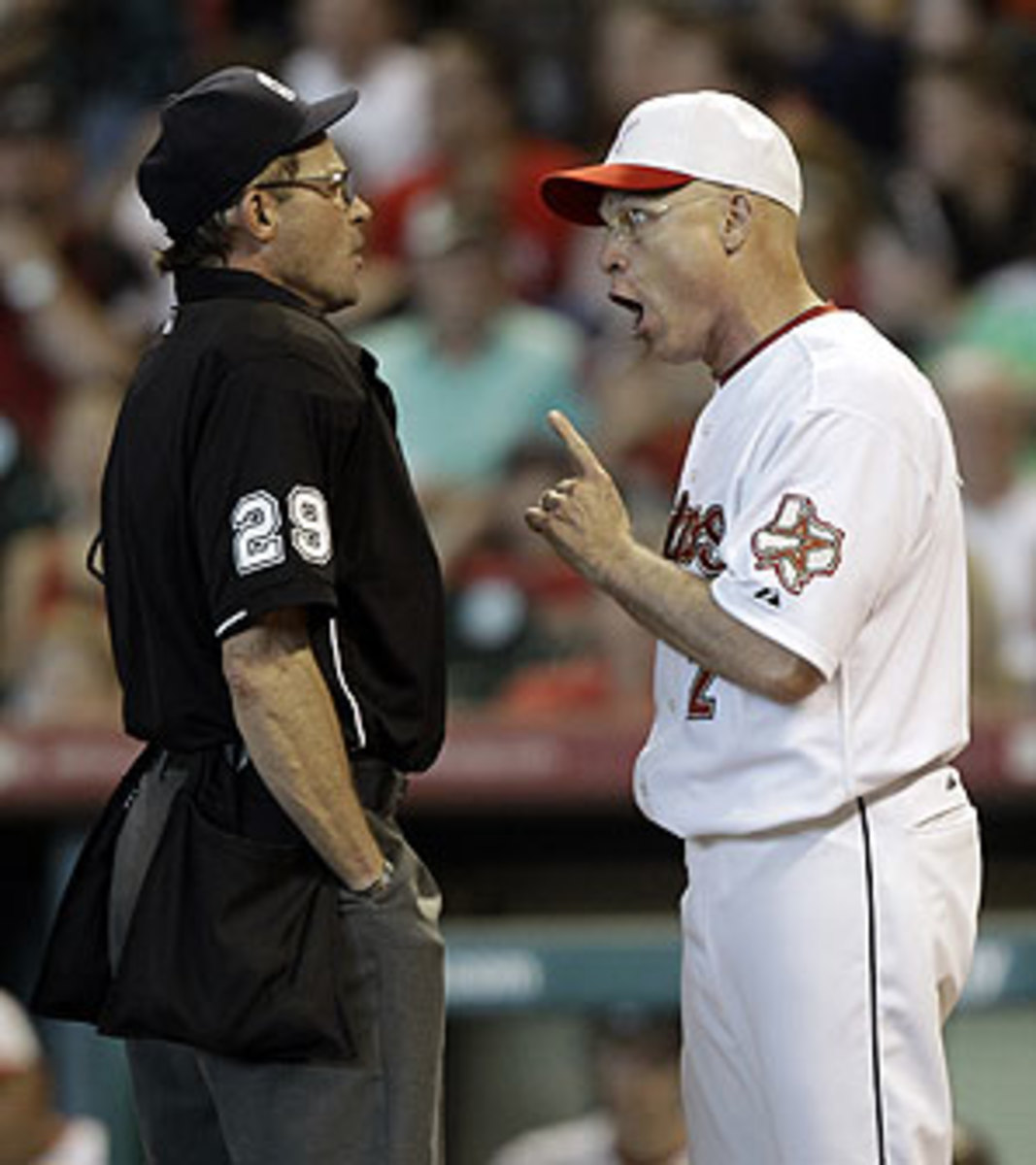
Under orders and under fire, umpires endure rocky spring
If May seemed like an especially confrontational month for umpires, you should know that it wasn't. Ejections were the lowest of any May in the past seven years, according to an MLB Incident Report. Here are the ejections for May over the past seven years:
2004: 41
2005: 41
2006: 44
2007: 40
2008: 42
2009: 36
2010: 33
Moreover, the number of warnings issued by umpires (to prevent pitches thrown intentionally at batters) dropped from 15 in May last year to 5 this year.
So what's going on? Umpires such as Joe West, Bob Davidson and Bill Hohn provided high-profile meltdowns that lived in regular rotation in the highlight shows, and many of the incidents happened within days of one another, giving the appearance of more mayhem than usual.
But one area of confrontations is trending upward and bears watching: complaints about balls and strikes. Of the 33 May ejections, 19 of them resulted from arguments about ball-and-strike calls, or 58 percent. Last year, 13 of the 36 ejections, or 36 percent, resulted from beefs about the strike zone.
There's one more factor in the umpiring unrest this year that I had not considered until one AL manager told me what's going on at ground level: the umpires are under tremendous pressure to keep the game moving. MLB officials have made pace of game a high priority, and the umpires are the foot soldiers in this war on dead time.
"One umpire flat out told me I was going to get ejected quickly because of the pace of game issue," the manager said. "He said, 'I've got to get these [arguments] over quickly to keep the game moving.' Can you believe that?'"
It is definitely a difficult time to be an umpire. Technology, as long as baseball keeps resisting it, is the umpire's enemy rather than his backup. That's how we wound up with CNN morning anchors standing in front of a giant HD touch-screen monitor circling Armando Galarraga's foot on the bag and the ball in his glove. And the pressure from MLB suits about pace of game turns umpires into belligerent officers of the baseball law, which is why we get umpires refusing to grant time to batters and umpires getting in the grill of managers, coaches and players and telling them to pipe down and get on with the game.
It's not just the umpires who are having a rough year. What the heck has happened to the hitters? Galarraga's pluperfect game would have been the third perfecto in 24 days. Baseball once went 57 years with only two of them.
Let's wait to see if offense picks up over the warmer summer months before we put a non-stick label on this season. But the first one-third of the season has belonged to the pitchers. Two perfect games and nearly a third don't define a trend. But when you check out what's been going on, baseball hasn't belonged this much to the guys on the mound since everything started to blow up in 1993, the first of two expansions in six years and the ascendant years of The Steroid Era. Check out some of the oddly poor offensive signs so far:
• There have been seven individual shutouts with one or no hits. With two-thirds of the season still to play, that's already more than occurred in either of the past two seasons and five of the past six years.
• The Dodgers and Diamondbacks scored two runs in 48 turns at bat in back-to-back games in Los Angeles.
• The Braves won nine straight games while allowing three runs or less in every game.
• The Phillies have scored 11 runs in their past 14 games.
• Team pitching staffs allowed one or no runs 266 times over the first one-third of the season, or 16.7 percent of their games -- that's up 33 percent from 10 years ago in the heart of The Steroid Era (12.5 percent).
• AL teams are scoring runs at a rate that if it holds up would be the league's worst since 1992. The NL rate, which has held steady from last year, also hasn't been worse than this since 1992.





